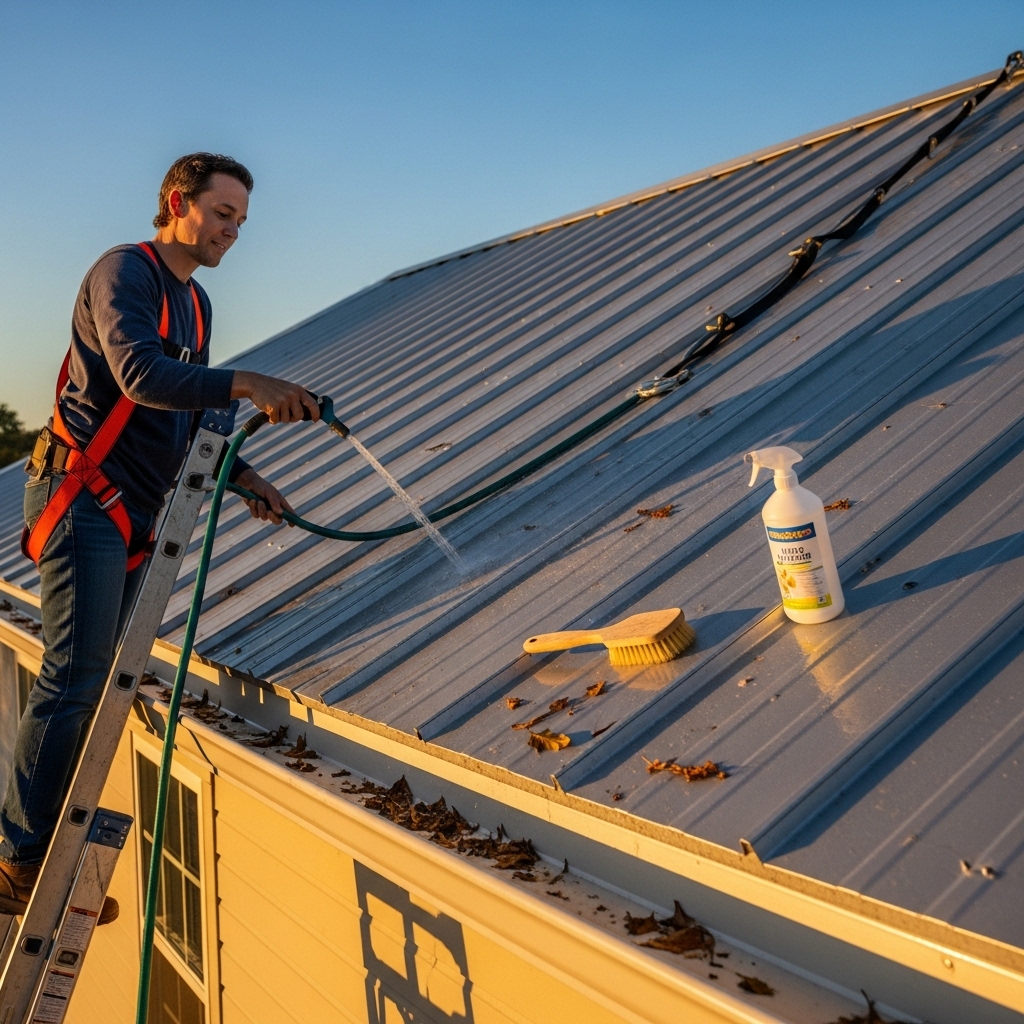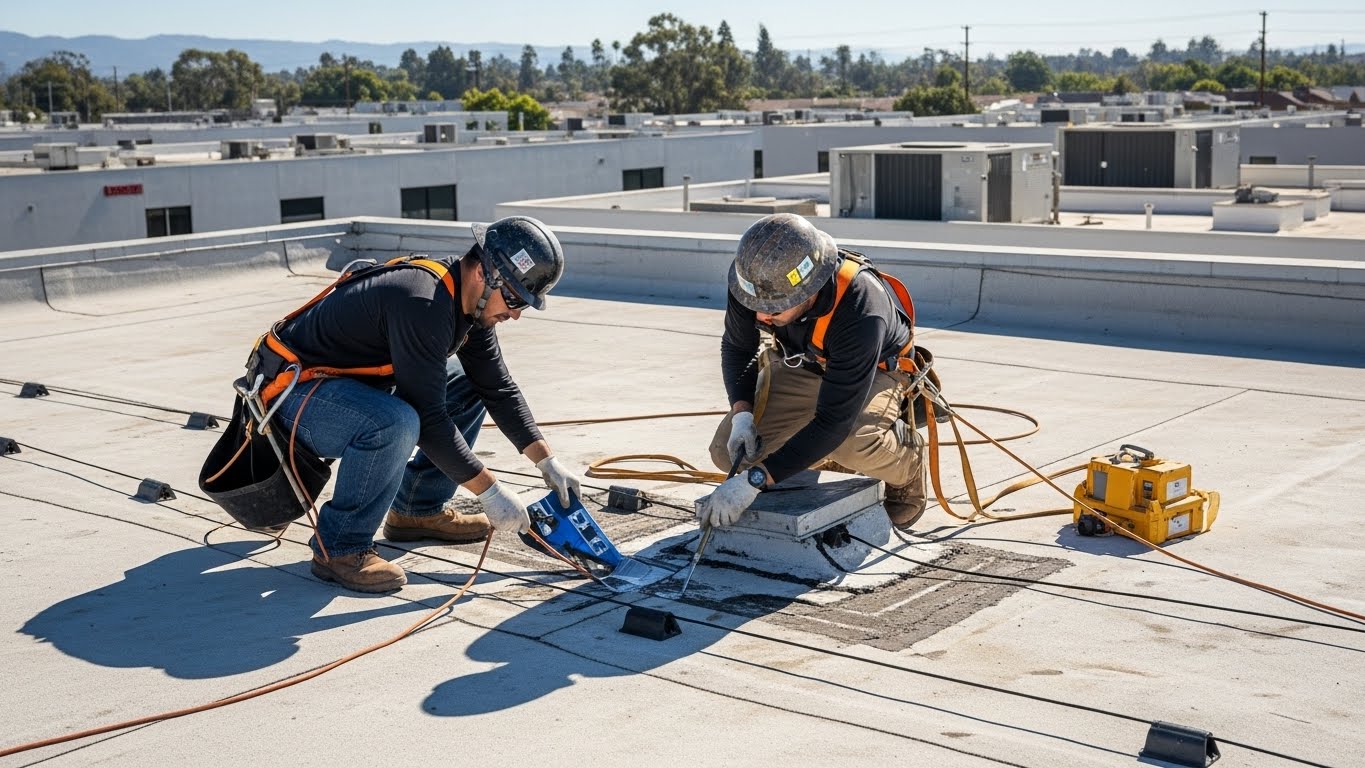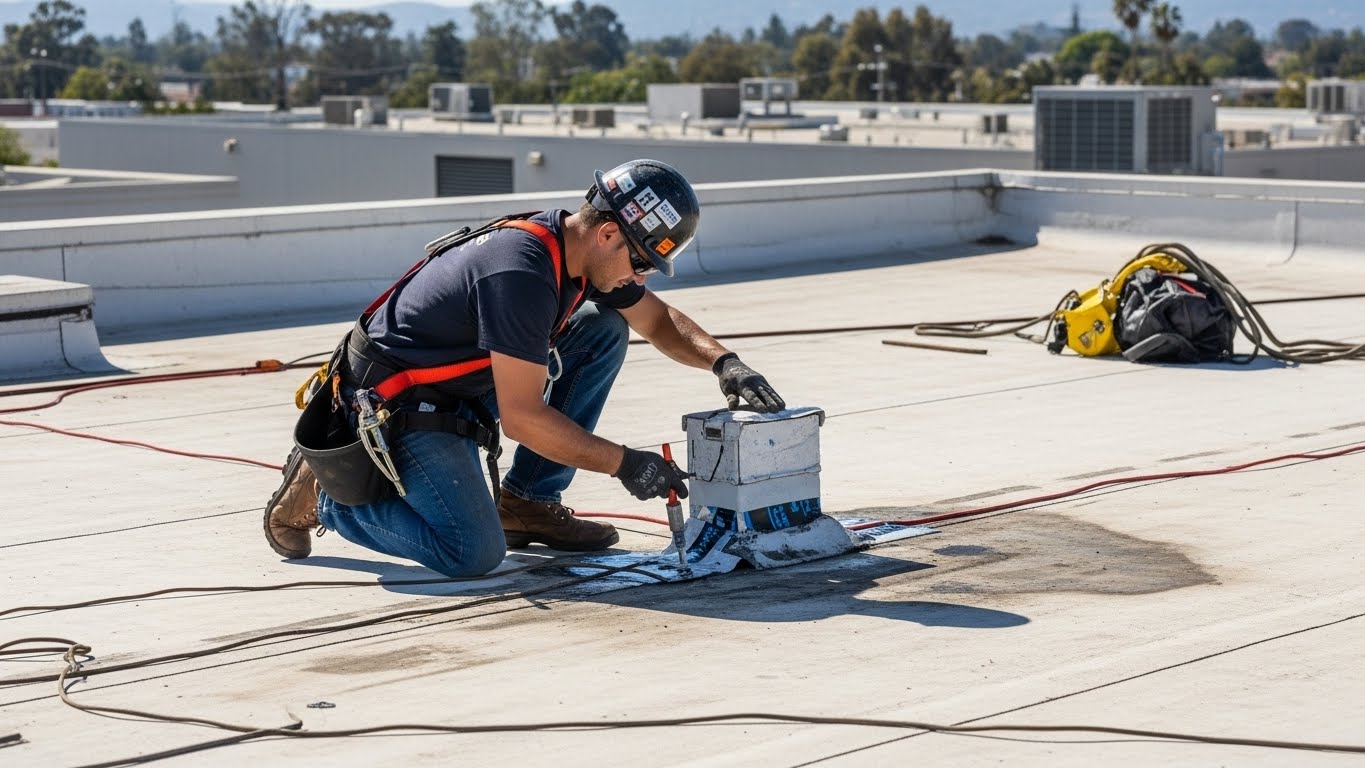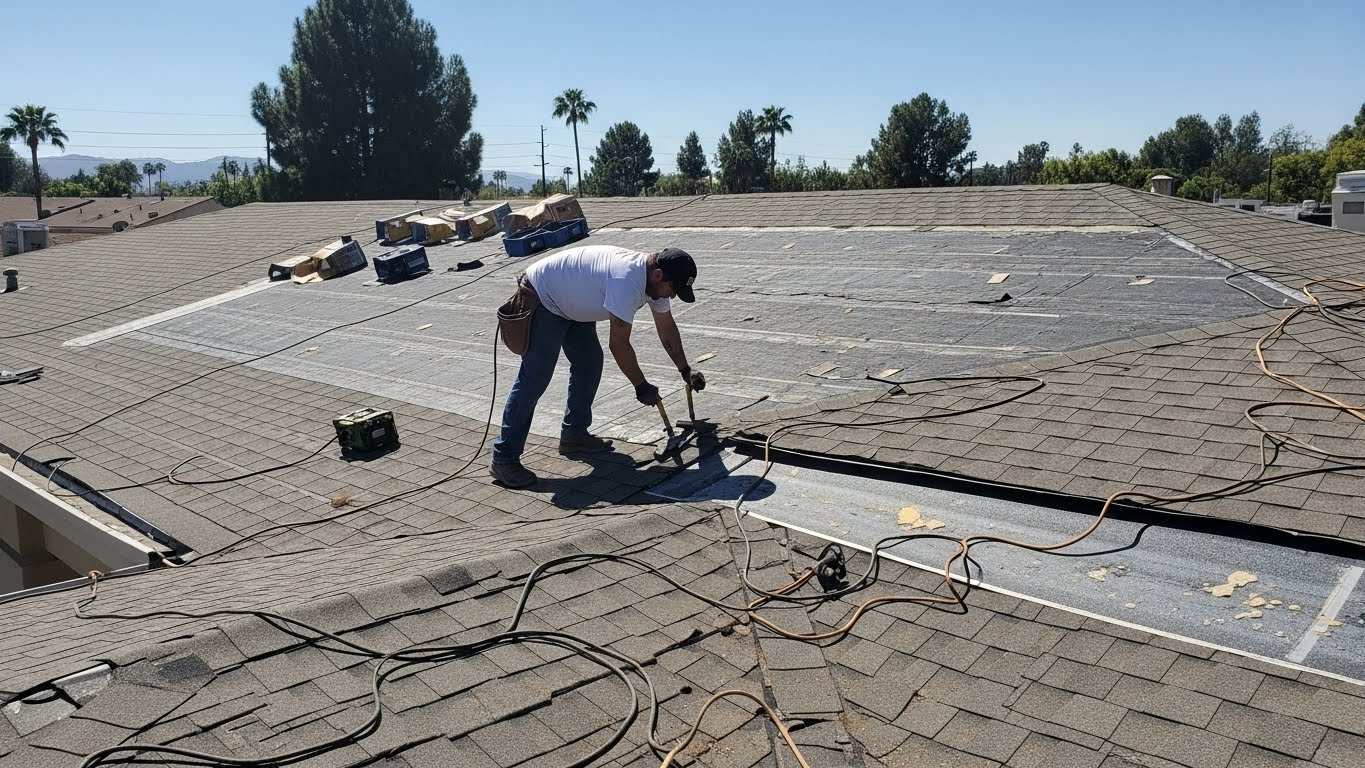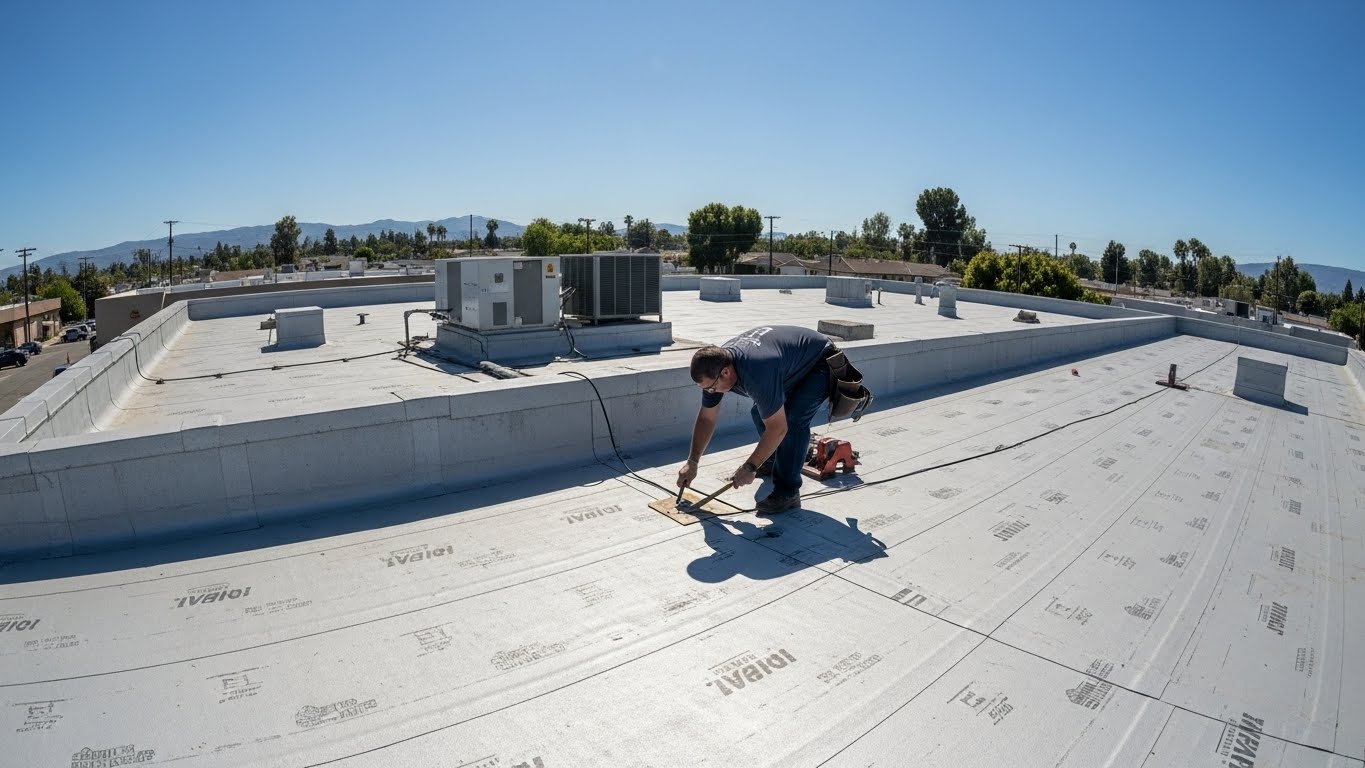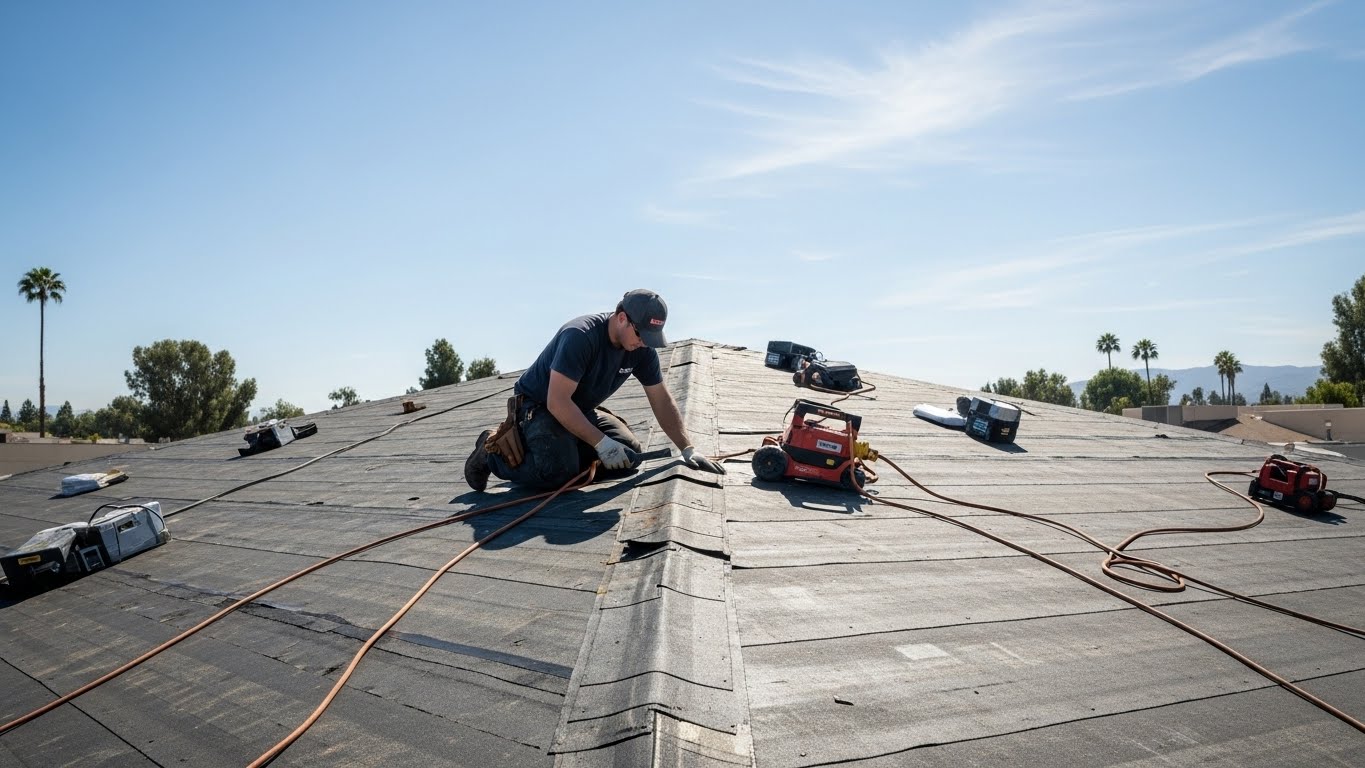Maintenance that Matches Tarzana’s Rhythm
Owning a home in Tarzana means living with long, golden seasons punctuated by quick, sometimes dramatic weather shifts. Most days are dry and bright; some autumn afternoons turn gusty with Santa Ana winds; and winter can deliver sudden, hard rains. A well-installed metal roof thrives in this rhythm, but a little thoughtful care keeps it performing at its best. Consider this your local guide to keeping metal roofing in peak shape, written from the vantage point of someone who has inspected, cleaned, and tuned roofs from the flats near Ventura Boulevard to the view lots tucked into the foothills.
Metal’s reputation for low maintenance is deserved, yet “low” does not mean “none.” The good news is that the tasks are simple, infrequent, and easy to weave into your seasonal routine. With light hands, the right tools, and a sense of timing grounded in our climate, you will extend the life of your roof and preserve the look that drew you to metal in the first place.
Start with Gentle Cleaning
Our bright, dry weather means dust and pollen settle steadily, especially during long stretches without rain. A periodic rinse with a garden hose helps keep finishes clean and reflective. Work from the ridge downward so water moves in the same direction as a storm, and avoid spraying upward against laps or under flashings. If you need a little more than water, use a mild, manufacturer-approved cleaner with a soft brush. Avoid abrasive pads or wire brushes that can scuff the finish, and leave pressure washers in the garage—they can drive water where it does not belong.
Cleaning is not just about looks. Dust and grime can trap moisture and pollutants against the surface, subtly accelerating wear. By keeping the roof clean, you help coatings retain their color and reflectivity, preserving the comfort benefits you feel inside on hot afternoons.
Mind the Gutters and Downspouts
Metal sheds water quickly, so your gutters and downspouts are crucial teammates during storm bursts. In Tarzana, most of our rain arrives in short, intense events, which means gutters must be clear and ready to move water fast. Check them seasonally, and especially after Santa Ana winds that drop leaves and small branches. Make sure downspouts flow freely and splash blocks or drain lines keep water away from foundations and walkways.
If you have hidden or built-in gutters—common on modern designs—inspect access points and liners. A small obstruction can escalate quickly during a cloudburst. A few minutes on a clear day sets you up for a smooth, uneventful first storm.
Inspect After Wind Events
Santa Ana winds are part of life here, and they tell you when it is time for a quick roof check. After a wind advisory, walk your property and look up at eaves, ridges, and roof planes. You are checking for displaced branches, loose trim, or anything that seems out of line. From inside the attic, a quick glance for daylight around penetrations or any sign of moisture gives additional peace of mind. Most of the time you will find no issues, but this five-minute habit can catch small problems before they become bigger undertakings.
Good metal roofs ride out wind nights quietly. If you ever hear a persistent rattle or flutter, it is a sign to schedule a professional look at edge details or fasteners before the next gusty stretch.
Watch the Transitions
The places where things change—chimneys, skylights, wall intersections, and plumbing vents—deserve focused attention. In heavy rain, water presses into these areas, looking for an easy path. Well-executed flashings and underlayment laps usually handle the load effortlessly, but sealants age and gaskets compress over time. Once a year, view these areas from a ladder or the ground with binoculars, looking for cracked sealant, displaced counterflashings, or debris piling against a curb. If anything looks suspect, call a pro to address it with the correct materials and sequence.
Solar arrays introduce additional transitions. Make sure wire penetrations are tight and mounts remain well-sealed. Coordinating a brief check with your solar service visit keeps both systems in sync and weather-tight.
Respect Thermal Movement
Tarzana’s daily temperature swing means your roof moves a little every day. Standing seam systems use floating clips to accommodate this, and exposed-fastener systems rely on properly seated screws with UV-stable washers. Homeowners can support this design by avoiding unnecessary roof traffic and by scheduling periodic checks of exposed fasteners—typically every couple of years—to make sure they remain snug and well-sealed.
If you ever notice a single screw that has backed out on an exposed-fastener roof, resist the urge to overtighten randomly. There is a right way to re-seat or replace fasteners, and a pro will confirm the correct size, washer type, and pattern so the system remains balanced.
Trim Back Trees and Vines
Branch tips that brush the roof during wind events can scuff finishes over time, and fallen debris can trap moisture against valleys and gutters. Keep branches cleared back from the roof line, especially palms and eucalyptus that shed fronds and pods during gusts. If vines are part of your landscape aesthetic, prevent them from climbing onto the roof where they can hold moisture and encourage pests.
Careful trimming protects not just the roof but also solar panels, skylights, and vent caps that perform best when free of leaf buildup and shade-induced condensation.
Ventilation and Attic Health
Even with a reflective roof, attic ventilation is vital. Balanced intake at eaves and exhaust at ridges or low-profile vents keeps heat moving out, protecting the roof deck and improving comfort. Seasonally, glance at soffit vents to make sure they are not clogged with paint, dust, or cobwebs, and check that ridge vents remain clear beneath their metal caps. Ember-resistant vent screens are a smart upgrade in our fire season and should be kept clean so they can do their job.
Healthy attic air also guards against moisture accumulation in cooler months, which preserves insulation performance and discourages mildew. A balanced system is quiet, invisible, and effective—exactly what you want.
Walk with Care
Sometimes you or another trade will need to step on the roof. When that happens, walk on panel flats near supports and avoid high ribs, which are not designed to bear point loads. Wear soft-soled shoes and mind your footing, particularly early in the morning when dew can make surfaces slick. If you are unsure where the structural supports are, or if slopes are steep, do not hesitate to call a professional for access support. Safety first preserves both you and the roof.
Communicate access paths to anyone servicing equipment on the roof, from HVAC to satellite or solar techs. A little guidance prevents accidental damage and keeps finishes looking sharp.
Mindful Cleaning Products
When a hose rinse is not enough, choose cleaning products that are compatible with your roof’s coating. Manufacturer guidance is your friend here. Avoid strong solvents and abrasive powders that can dull the finish. On stubborn spots—sap, bird droppings, or residue under trees—soaking with a mild solution before gentle brushing often does the trick. Rinse thoroughly so cleaner does not dry on the surface under our fast-evaporating sun.
If you ever have to remove pitch or tar from previous repairs, get professional help. The wrong solvent can etch or stain finishes, and there are targeted products that handle these tasks without collateral damage.
Check Sealants and Touch-Up Paints
Sealants and gaskets are the flexible members of the roof team. They work hard at penetrations and trim intersections and deserve periodic attention. Look for signs of drying, cracking, or UV chalking, especially on west-facing exposures. When touch-up is needed, use the exact sealant type and color recommended for your system, and apply it in the right sequence—always backing up sealant with proper laps and flashings, never relying on caulk alone to solve a water path.
Touch-up paints blended for your finish keep small scuffs from becoming visual distractions. A tiny kit stored in the garage and used sparingly keeps the roof looking composed.
Plan for Storm Season
Before the first real storm of winter, give the roof a once-over: clear gutters, check valleys for debris, confirm downspouts, and scan transitions. This small ritual is usually all that is needed for a quiet season. After the first storm, a quick interior check—ceilings, skylight wells, and attic—confirms all is tight. If anything looks off, a timely call prevents the second storm from testing the same spot.
Because our rains come in bursts, being ready the first time matters most. Metal gives you a head start; your preparation finishes the job.
Coordinate Solar and Roofer Visits
Solar arrays and metal roofing are excellent partners, but coordination keeps them at their best. Schedule a roof check when solar crews plan maintenance or inverter swaps. Confirm mounts remain tight, wire penetrations are properly flashed, and any conduit runs are secure and sealed. If you are adding solar to an existing metal roof, consider clamp-on mounts for standing seam systems to minimize new penetrations.
Integration done right keeps both investments working in harmony and preserves the clean look that likely drew you to each system.
Documentation and Warranty Care
Keep a simple log of maintenance dates, photos before and after cleanings, and any service visits. This record is useful if a warranty question arises and helps you spot patterns before they become issues. Store small amounts of matching sealant and touch-up paint with labels attached so you know what was used and when.
Documentation turns memory into evidence and makes it easier to hand off roof knowledge if you ever sell your home. Buyers appreciate a well-kept record, and it reinforces the value of your roof investment.
When to Call a Professional
While most maintenance is homeowner-friendly, there are times to bring in a pro: persistent drips after storms, noticeable movement at edge trim, or visible fastener backing on exposed systems. Professionals have the ladders, harnesses, and material-specific tools that keep work safe and warrantable. They also bring an eye for details—like subtle misalignments at a valley or the early signs of gasket fatigue—that are easy to miss from the ground.
A quick service visit now often prevents a more complicated repair later, and it keeps the roof’s performance tightly aligned with Tarzana’s climate demands.
Frequently Asked Questions
Q: How often should I rinse my metal roof? A: In Tarzana’s dry climate, a light rinse once or twice a year is usually enough, with an extra rinse after a dusty Santa Ana stretch if needed.
Q: Is it safe to walk on my metal roof? A: Yes, with care. Walk on panel flats near supports, avoid high ribs, wear soft-soled shoes, and consider professional assistance on steep or unfamiliar sections.
Q: What should I use to clean stubborn spots? A: Start with mild, manufacturer-approved cleaners and soft brushes. Avoid abrasives and high-pressure washing that can damage finishes or force water under flashings.
Q: How do I maintain gutters with a metal roof? A: Keep them clear of leaves and debris, verify downspouts flow, and ensure slope and sizing can handle sudden downpours common in our area.
Q: Do I need to check fasteners? A: On exposed-fastener systems, a periodic check every couple of years is wise. Standing seam systems rely on concealed clips that typically do not need homeowner adjustment.
Q: Will trimming trees really make a difference? A: Yes. It prevents finish scuffs, reduces debris accumulation, and keeps water moving along designed paths.
Q: How do I know if attic ventilation is adequate? A: Interiors that feel stifling in the late afternoon or attic spaces that hold heat into the night may indicate ventilation imbalances. A professional can assess intake and exhaust ratios and recommend tweaks.
Q: Can I coordinate maintenance with my solar provider? A: Absolutely. Align visits so mounts, penetrations, and conduits are inspected while panels are serviced, ensuring both systems stay weather-tight.
If you want a maintenance plan that fits your home and your schedule, let’s map out the simple steps that will keep your roof quiet, cool, and composed year-round. For friendly, local guidance and help with tune-ups or inspections, explore your options in metal roofing and enjoy the easy confidence that comes with a roof ready for every Tarzana season.

